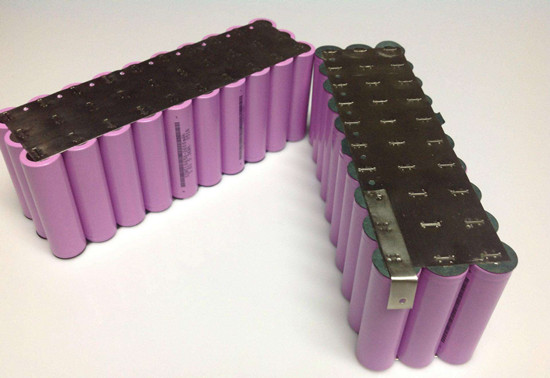What is 18650 battery voltage tester?
Aug 08, 2019 Pageview:2045
18650 batteries are among the newest battery chemistry in the industry. They are smaller batteries larger than the normal AA batteries. Their name and description comes from their size.
As much as they are powerful, there are several challenges that come with using them. Among these challenges is understanding voltage.
One of the most important things to have when using 18650 batteries is a voltage tester. To help you understand what this means, here are some parameters you need to be aware of.
· Charged voltage. This is the maximum voltage the cells of the batteries are required to have. There are some rechargeable 18650 batteries used in devices like power banks and laptop. Generally, the highest voltage is 4.2V. If you charge beyond this, you will be destroying the cells.
· Nominal voltage. This is the voltage manufacturers use to describe their product. It is the voltage between full charge and complete discharge. Normally, a battery with 3.7V is described as having a nominal voltage.
· Discharge voltage. This is the least voltage 18650 batteries are required to have. In essence, you need to ensure your batteries don’t discharge beyond and at a certain level. If this happens, the cells will be damaged and cannot be recovered.
A voltage tester is a device used to ensure these parameters are kept at optimal. The main aim of using the devices is to avoid destroying your batteries and device with it.
There have been instances, for example, where batteries have exploded causing disasters. It is because perhaps the user was not careful enough to charge the battery as expected. Or sometimes you find yourself spending a lot on batteries instead of other things.
And that takes us to a good question:
Does 18650 battery need voltage tester?
The simplest answer to this question is yes. If you are going to make a battery pack, then there is no way you can avoid getting a voltage tester. It is like a map that tells you where you need to go and how you can get there.
When you buy a battery, whether as a single cell or a pack, there are specifications for use indicated on the cover, for instance, you will see a label showing the capacity, like 2600 mAh. This means the battery needs to discharge 2.6 Ah per hour.
Apart from this, other user guidelines mostly focus on extending battery life and safety. In this regard, here are some things that show you may need a voltage tester:
· Battery charging. As discussed above, there is a specific voltage your pack needs to get to. For most products, the battery is not supposed to charge beyond 4.2V. You will be destroyed, and you may need to go for another battery.
· Discharging. The minimum discharge for rechargeable batteries is 3.0Volts. You need to ensure you have used the batteries appropriately and charged than before they go below this parameter. Just like overcharging, draining your batteries destroys the cells.
· Current charge rate. While charging your batteries, how first should they take charge? You are advised to keep it at 0.5 or check specifications from your manufacturer.
· Discharge rate. There is another parameter for showing how first your batteries should discharge. You need to make sure the rate does not go too high or too low.
· Monitoring cell voltages. When creating a battery pack, one of the most important things is to ensure voltages are balanced. Every cell needs to have a balanced charge to ensure the risks of short-circuiting are eliminated.
· Charge cycle. When it comes to getting a longer lifespan, charging your cells in the right manner is essential.
· Individual cell disintegration issues. You need to keep an eye on the pack and have them all connected well.
Most issues with batteries come with charging and discharging. There are risks in using 18650 batteries in a pack. Even when there is an explosion, it mostly seems to revolve around charging.
For this reason, you need a voltage tester. It will help you set the right voltage for your pack. Above that, the tester will help you avoid overcharging and over draining your batteries. It shows the speed of charge and discharging while indicating the exact voltage at any given time.
Advantages and limitations of 18650 voltage tester
Advantages
Using the right voltage tester any battery pack can save lives. Mistakes happen all the time, and one biggest era is forgetting to focus on the protocol. As such, a voltage control instrument should be among the set of your minimum specifications.
Apart from that, here are some advantages of using 18650 voltage tester:
· It eliminates guess work. Sometimes people are in so much hurry to get their battery packs working they want to take shortcuts. Creating your pack is a good idea, but you need every cell to have the right voltage. Just buying new cells from the shop is not enough to let you assume they have the same voltage, for instance, considering shelf life and self-discharge. A tester will help you bring the batteries to the same level.
· They don’t depend on manual settings. Devices like multimeters may cause a high-energy arc flash. Use a volt tester that does not require a manual setting.
Limitations
· It is very hard to keep a voltmeter connected all the time. Some of the consumer power too, and that may mean your batteries will not last long.
· Sometimes they are not accurate
· In most cases, a voltage tester will not measure the volt at a certain threshold, especially when it is too low.
· Testers like solenoid-based have relatively low input impedance.
How to use 18650 battery voltage tester properly
The first step to using a voltage tester for 18650 packs is getting the right tester. Not every tester on the market will serve your needs.
Step 1: What you need
· The right volt tester
· RC charger
· Four trays
Step 2: Test the voltage
If you are using old cells, measure their voltages individually. Dispose of anything below 2.5V.
Step 3: Arrange your batteries in the four trays
Every tray should have batteries with different capacities. Have those that are good together and dispose of bad ones.
Step 4: Connect your cells and charge at about 375mAh for four batteries
Use the RC charger and follow instructions in the manual. Set to low charging if using old batteries. Set the voltage to 3.7 and start the charge.
Step 5: Discharge and arrange in groups again; this should give you proper capacity.
Step 6: Measure the voltage of the pack
Simply connect the volt tester to your pack from the charger and check the volt. Digital voltmeters are very easy to use.
- Prev Article: What is lithium-ion battery?
- Next Article: Tell Me More About 18650 Charge Time
Leave Message
Hottest Categories
-
Hottest Industry News
-
Latest Industry News











